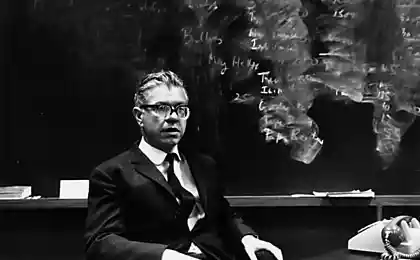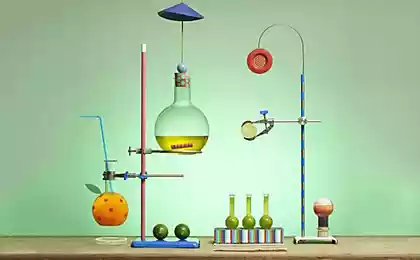828
10 scientific discoveries that will save the Earth

Artificial eruption, mirrors in orbit, genetically modified trees. These are some of the 10 most brilliant inventions made in 2007 by scientists around the world to resist the overheating of the planet. The essence of the invention are set forth in the American online magazine Wired. Some believe that the rise in temperature requires the implementation of extreme measures, while others fear that the decision may be worse than the problems themselves. Yet all believe that the most important risk is to maintain the status quo.
1. Agriculture at a height
With the growth of population over 40 years old to 9, 2 billion people there is a need to double food production. 37% of the Earth's surface is already set aside for agriculture, and in this situation the solution could be an ecological skyscraper for greenhouse crops, which will operate 365 days a year. The prototype created by Columbia University professor Dickson Despomerom, already installed at the Museum of Science and Industry Chicago.
2. Eco-friendly cow
Each year, cows and other livestock in the air emit 80 million tons of methane - a greenhouse gas 20 times more saturated than carbon monoxide. Decision of British scientists was the garlic, which when added to cattle feed affects the bacteria that produce methane, and improves digestion. But while the meat may have a flavor that consumers do not like.
3. Brushes for coal
Professor Klaus Lackner, a physicist at Columbia University, designed the maxi brush, a height of almost 100 meters, to absorb the same amount of carbon dioxide, which emit 15 thousand cars. The fleet of devices, about the size of Arizona, would cancel the toxic emissions of the whole of humanity, but remains only to understand what to do with the collected gas.
4. Controlled hurricanes
According to the Hebrew University physicist Daniel Rosenfeld, injecting dust into the foundation of a hurricane, you can improve the picture obtained from satellites and to monitor its progress and power. However, if control is lost, the consequences could be disastrous, including in legal terms.
5. Vessels-Factory clouds
The fleets of remote-controlled vehicles can reflect the sun's rays, creating clouds of steam with the help of ocean water. According to the American physicist John Lathema and his Scottish colleagues Stephen Salter, a thousand such ships can prevent temperature increase caused by a doubling of the amount of carbon dioxide in the atmosphere. However, yet to explore the potential effects of such a method for the climate.
6. Better trees
American scientists published a study whose aim was to genetically modified trees to make them grow faster and reduce the amount of lignin, in other words - a chemical compound, which hampers their transformation into biofuels. Thus, they will absorb more carbon dioxide in the roots, and the remaining part of the trees can be used as a biological fuel. What is the risk? Change the balance of the ecosystem at the global level.
7. Fertile Oceans
When applying seawater elements such as urea or iron increases the fertility of the oceans and the ability to reproduce plankton, so that it was able to absorb large amounts of carbon dioxide. When the flora dies, it carries with it to the bottom of the ocean carbon. The danger is that with the increase in the liberated carbon absorbed and will increase the acidity of water.
8. Artificial eruption
Spray sulfur in the atmosphere using rockets, planes and even artificial volcano to block the sun's rays, as happened in 1991 during the eruption of Mount Pinatubo in the Philippines. The concept proposed by Nobel laureate Paul Crutzen may contribute to the fact that for 10 years the Earth's temperature will drop to the level of the 90s. But if something goes wrong, it will take many years to restore the balance in the atmosphere.
9. Space Mirror
Solar Shield, an area of 1, 5 million square meters, created 16 thousand billions of mirrors and launched into orbit with the help of carbon maxi-gun, worth 5000 billion dollars. With this idea, an astronomer at the University of Arizona, Roger Angel intends to cool the planet. The risk is that the atmosphere may not occur, and that the absorption of carbon at one point, the greenhouse effect will manifest itself again.
10. The status quo
Brilliant projects described above can cause dangerous consequences if something goes wrong. But relapses are less destructive than that of complete inactivity. Throw into the atmosphere every year 8, 4 billion tons of carbon monoxide, and to increase the total amount of the compound to record levels equivalent to holding the most dangerous experiment ever undertaken by man. With the threat of non-refoulement.
























